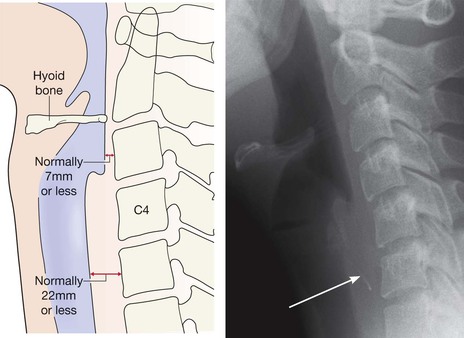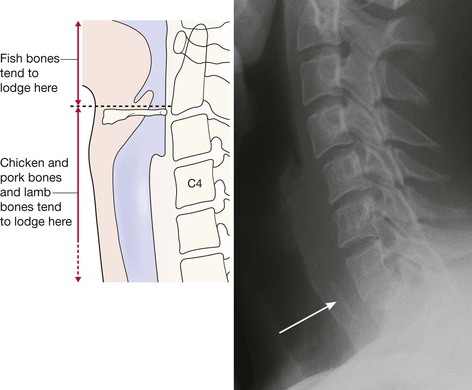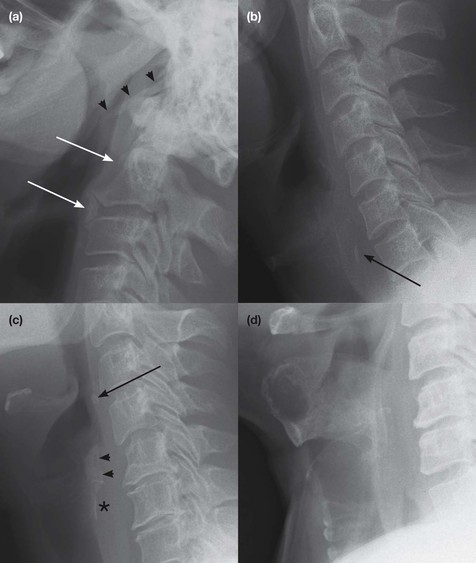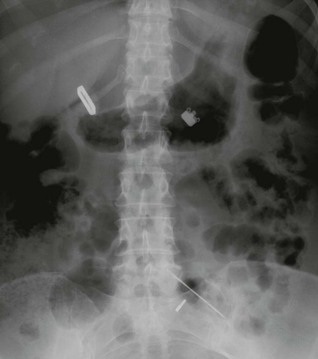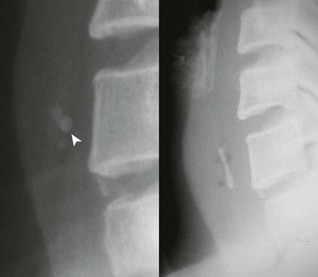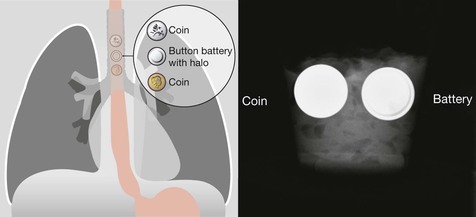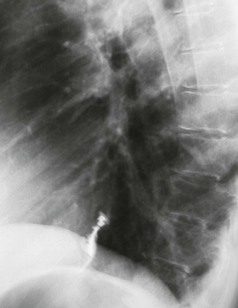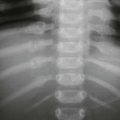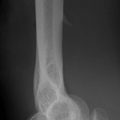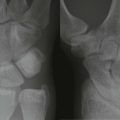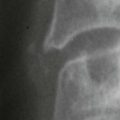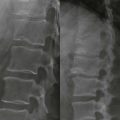Swallowed foreign bodies
The most common foreign bodies1
Children: coins
Radiography…
Occasionally, a coin will lodge in the oesophagus. Some of these patients will be asymptomatic. An unrecognised coin can cause clinical problems including erosion of the mucosa which may result in an abscess or mediastinitis4. It is important to confirm that any swallowed coin has passed beyond the oesophagus. If the CXR is clear then the parents can be reassured that the coin will be passed within a few days.
Does the stool need to be checked? Sometimes a coin will be overlooked in the stool; the parents would be better advised to return to the Emergency Department (ED) only if the child becomes symptomatic.
Coin composition: coins in the UK and in the European Union are made of steel or alloys of various metals and sometimes coated with copper. In effect, these coins are inert. This does not apply worldwide. For example, in 1982 because of the cost of copper the one cent coin in the USA (commonly referred to as the penny) was minted with a mainly zinc core and a thin copper coating. Interaction between gastric acid and zinc can cause ulceration in the stomach. This possibility led to various scares and the consequent overuse of routine AXR. The penny constituents were not changed, but eventually a practical recommendation was made and widely adopted: if a USA penny has been swallowed and the CXR is clear then an AXR need only be obtained in a child who subsequently developes intestinal symptoms. The latter is an exceptionally rare occurrence.
Adults: fish bones
Fish bones comprise more than 70% of all foreign body events that cause an attendance to some EDs12,13. Complications resulting from an impacted fish bone are rare but can be serious. These include: neck abscess, mediastinitis and lung abscess.
Fish bone impaction is very different to that of other impacted foreign bodies14,15.
▪ Infrahyoid impaction is much less frequent. In one series15 approximately 90% of fish bones were situated in the oro-pharynx, whereas approximately 90% of other foreign bodies (poultry bones, dentures, wood splinters, coins, pork bones and lamb bones) were impacted more distally in the laryngeal pharynx or upper oesophagus.
Radiography.
▪ The use of a lateral radiograph of the neck should be limited, selectively employed, and based on a diagnostic algorithm (see p. 353).
What to look for.
▪ The occasional fish bone that does impact below the hyoid bone.
□ Gas in the soft tissues, either as a streak or as a pocket, suggests perforation.
□ Widening of the prevertebral soft tissues suggests an abscess.
Infrequent but important FBs
Sharp objects other than fish bones
Many sharp objects pass through the intestines without causing a problem. Nevertheless a sharp or pointed object may penetrate the oesophagus or the bowel. The presence of the swallowed object needs to be confirmed (or excluded).
Radiography:
▪ For chicken, pork chop18, or lamb bones a lateral view of the neck is indicated. Approximately 90% of these foreign bodies, when impacted, will be found to be lodged in the hypopharynx or upper oesophagus15. This is a very different position of impaction as compared with impacted fish bones (see pp. 352–353).
▪ Aluminium (eg as in a drink can ring pull) is of very low radiodensity19 and is rarely detectable on a radiograph. An aluminium ring pull (aka aluminium tab) will be detected by a HHMD5–7. Many countries have largely overcome the swallowed ring pull problem by producing ring pulls that remain attached to the can after the can is opened. Nevertheless, it is still possible to detach the ring pull from the can by wiggling it. Therefore the swallowing of ring pulls has not been eliminated entirely20.
Button batteries23–27
An impacted button battery (BB) is a diagnostic and endoscopic emergency. If ingested, a CXR is crucial. Obtain it as soon as the patient arrives in the ED.
Most small size BB ingestions do not cause damage, provided the BB does not lodge in the oesophagus. The frequency of lodgement is increasing with widespread usage of the 20–25 mm diameter lithium batteries. A BB stuck in the oesophagus can cause serious mucosal injury. The damage is primarily caused by an electrical current that hydrolyzes soft tissue and results in liquefactive necrosis, not leakage of battery contents. Damage can occur very quickly, sometimes within one or two hours of lodgement23,24. Mucosal damage can result in oesophageal perforation, tracheoesophageal fistula, stricture formation, and death24. Rapid diagnosis and emergency removal of a lodged battery is essential.
Note: BBs can also cause a similarly serious injury if placed in the ear or nose23,24,27.
Magnets6,10–12,28
Powerful rare earth magnets can be found in toys, jewellery items, beads, nose and tongue piercings, studs, desk toys, stress relievers, homeopathic and naturalistic aids, and other items such as bracelets used in folk medicine.
Swallowing magnets appears to be relatively common amongst autistic children with access to magnetic pieces8.
The ED aim is to determine whether more than one magnet has been swallowed. If a child swallows more than one magnet and they pass through the pylorus then the separate pieces can attract each other across different bowel loops. Gut wall necrosis, perforation, fistulae, haemorrhage, and volvulus are potential and serious consequences. Alternatively, a child might swallow one magnet and another piece of metal to which it is attracted. This is also dangerous.
Large objects—dentures29–31
A large object such as a dental plate or appliance may lodge in the cervical or thoracic oesophagus. If it remains impacted it may erode the mucosa and cause an abscess or mediastinitis. Radiography:
1. Well penetrated PA and lateral CXR, to include the neck.
A negative CXR does not exclude an impacted denture; not all dentures are radio-opaque.
Ingestion risk is not limited to partial dentures. Full (ie complete) dentures can be swallowed.
CT and MRI can help to identify acrylic dentures. However, image interpretation with these investigations is not always straightforward and can be very difficult30.
Hard plastic clips
Bread bag clip ingestion can cause intestinal perforation, stricture, or obstruction.
▪ The impaction mechanism is seemingly due to the prolapse of mucosa into the jaws of the clip. This impaction can erode the mucosa32. Complications from an impaction may be delayed and can occur years after the ingestion. Most cases of accidental ingestion of a bread bag clip occur in elderly and edentulous patients. The patient is usually unaware of having ingested this foreign body.
Bezoars33
A bezoar is ingested foreign material that accumulates within the gastrointestinal tract.
Radiography:
▪ On the other hand, sonography or CT can assist with the rapid diagnosis of a bezoar as the cause of the intestinal obstruction33.



